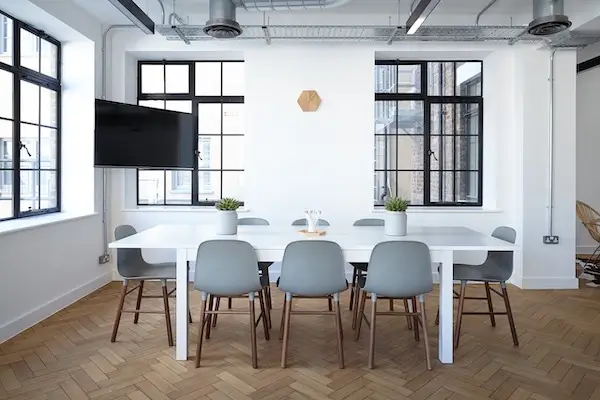Understanding the Functional Aspects of the Modern Office

The quality of an office environment plays a crucial role in keeping employees happy, healthy, and highly productive.
The quality of the office environment depends on a wide variety of factors not associated with elements such as organizational culture or policies. The factors or elements that are about to be covered by this article focus more on aesthetics, lighting, temperature, space, and last but not least, ergonomics.
1. Aesthetics & Lighting
The office is a second home to most employees, given that they spend about seven hours working in an office. Due to this, how the office looks, feels, or makes the employee feel is a critical aspect of keeping stress at bay.
A clean office that is decorated appropriately with ‘nice furniture’ and organized well is essential to making employees feel almost at home (too many decorations or ‘comfort zones’ could lead to employees becoming lethargic or even lazy, which is counter objective). Lighting is another important factor within an office environment, as the light conditions must be optimal for the employee.
The tone and brightness of the light must be comfortable for employees; lighting conditions that are too bright or too dim could cause stress and even strain the eyes after a few hours, and continuous exposure to such lighting conditions could cause eye damage due to the light-sensing cells in the retina being overstimulated and dim lights, on the other hand, causes eye fatigue.
2. Space Utilisation & Organisation of the Office
Most offices are organized mathematically with even lengths and widths for each cubicle; the pantry is generally located at the end of an office (normally close to the restrooms), and the offices of the seniors are at the opposite end of the pantry or on an entirely different floor.
As employees come in, they are given their ‘standard’ cubicles or workstations as time passes – this should not be the case. Rest areas, the pantry, and the restrooms should be located at a more convenient location ‘for all,’ the space given to each employee should be according to their job functions.
For example, an employee managing data entry would require less space than an employee managing physical files. By allocating more space to those who need more space, office managers prevent cluttering, which can be very distracting.
3. Furniture
Office managers often undermine the level of furniture quality even though office furniture quality plays a role in productivity. It is essential to have good ergonomic office chairs, desks, and cabinets. For the most part, a good quality ergonomic office chair or desk would be ‘extremely adjustable’ according to the physical proportions of the user.
Most offices tend to use regular office chairs and desks, which are only good if the employees use them for less than an hour or two.
However, for employees who have to sit and work for more than 3 or 4 hours daily at their workstations, ergonomic furniture is the best way to go as it not only keeps employees comfortable and safe but also enables employees to focus more on the tasks that they are given.
Trackback from your site.
